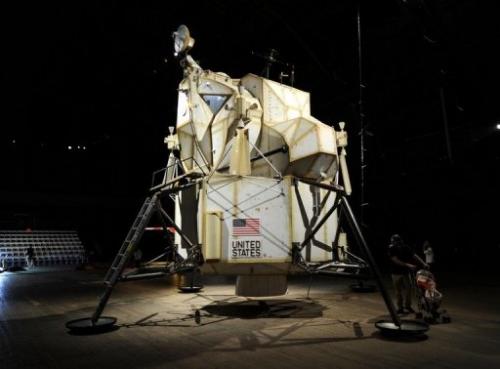

| Visitors Now: | |
| Total Visits: | |
| Total Stories: |

| Story Views | |
| Now: | |
| Last Hour: | |
| Last 24 Hours: | |
| Total: | |
Landing Astronauts Safely on Mars is One of the Biggest Technological Hurdles for Any Future Manned Mission to the Red Planet
Wednesday, May 8, 2013 6:30
% of readers think this story is Fact. Add your two cents.
Landing is key puzzle in Mars trip, experts say
Landing Astronauts Safely on Mars is One of the Biggest Technological Hurdles for Any Future Manned Mission to the Red Planet, even more complicated than last year’s daring rover touchdown.
NASA dazzled observers by landing the one-ton Curiosity rover on Mars in August in a high-speed operation using a sky crane and supersonic parachute, but experts say the task would be even more challenging with humans onboard.

Artist concept painting shows NASA’s Mars Science Laboratory Curiosity rover on the surface of the planet, July, 2011. Landing astronauts safely on Mars is one of the biggest technological hurdles for any future manned mission to the Red Planet, even more complicated than last year’s daring rover touchdown.
“The Curiosity landing was an amazing accomplishment,” said Robert Braun, a former NASA engineer now at the Georgia Institute of Technology.
“But it’s really a baby step that we needed to take, on the way of one day walking on the Mars surface,” he said at a conference in Washington on Tuesday.
The three-day meeting, which started Monday, has brought together NASA experts, university researchers and members of the aerospace industry for talks focused on exploring the neighboring planet.
“Curiosity has been described as a small car,” Braun said of the six-wheeled mobile lab that has been exploring Mars for the last nine months.
Where Curiosity weighed one ton, engineers estimate a supply capsule to prepare for a manned landing would weigh somewhere around 40 tons.

An art installation titled “Landing Excursion Module (LEM),” part of “SPACE PROGRAM: MARS” by artist Tom Sachs at the Park Avenue Armory May 16, 2012 in New York. Landing astronauts safely on Mars is one of the biggest technological hurdles for any future manned mission to the Red Planet, even more complicated than last year’s daring rover touchdown.
Such a mission would require not only food, water and oxygen for the astronauts, but a vehicle powerful enough to get them back to their spaceship, which would likely remain in orbit.
“The technologies we will use to land our systems on Mars will probably have little semblance to the systems we have been using for the robot program because of their scale,” Braun said.
The first six robots NASA sent to Mars starting in 1974 were light enough that their descent was slowed by parachutes and their landing aided by balloons.
BY AFP
Read more at:


